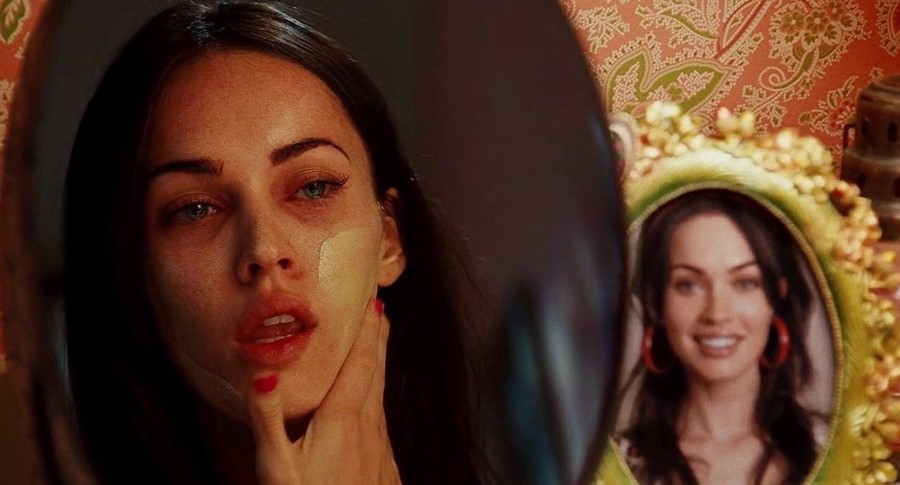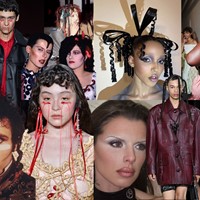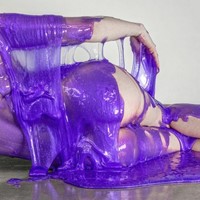Behind every strawberry girl and brownie glaze manicure is a desperate longing to be a part of something
Strawberry girl, “clean girl” aesthetic and Barbiecore are just some of the many trends that graced the online beauty space in the past year. While trends will inevitably shift and evolve, the speed with which we are now cycling through these aesthetics suggests that we are searching for something more than just a flattering lipstick shade. As we chase each fleeting trend, this compulsion to engage tells us a lot about loneliness and our modern-day yearning for belonging, human connection and community.
Our fascination with trending topics is more deep-rooted than one might think, according to Taryn Thrasher, a psychology lecturer at California State University Long Beach. “Humans are predisposed to seek new things,” she explains. “It triggers the reward centres in our brains, so when there is a new trend, there is not only an opportunity to cultivate a sense of belonging, but there is also a neurochemical reward for achieving appreciation from fellow community members once you have successfully replicated the trend. Validation from others reinforces participation in trends and contributes to the cycle of virality that we see in social media today.”
When we participate in trends, we become contributors to the conversation rather than observers, which makes us feel more connected to community, like-minded people and society as a whole. Participation allows for us to receive positive affirmations from our digital circles and, in cases such as TikTok and Instagram, strangers across the internet. These affirmations can bolster a positive sense of self. Following trends can also lead to a sense of solidarity, according to a 2022 study done on the positive impacts of social media.
In other words, the more we participate in trends, the more included we feel and the more socialising we do. “If someone is accepted into trending culture, it increases their opportunity to engage with others and hence increases their social interactions,” says Destyn Jones, a psychology trainee at the University of Ohio. This is important because humans are wired with an intrinsic need to affiliate with others and be socially accepted, and having this sense of belonging is integral to our emotional and physical health. Prolonged loneliness can lead to depression and anxiety and has similar health risks as smoking – and it’s rising. In 2022, almost half of adults in the UK (49.6 per cent) reported feeling lonely, while seven per cent experienced chronic loneliness.
Part of the problem is that we are losing our physical third spaces and are increasingly turning to social media to find community and satisfy our need for belonging. The online beauty space has the potential to offer people a sense of community with its shade-match reviews, niche and diverse representation, celebration of gender expansion, judgement-free remedies for skin concerns and physically accessible beauty routines. In order to gain access to this world, however, it can feel necessary to participate in every trend and micro-niche aesthetic that goes viral, along with all the new products and pressures they entail.
Like all things in this consumer-driven world, there are financial barriers to participation at different levels of the beauty sphere. And while beauty products tend to be more affordable than fashion – particularly with its dupe culture which has largely eliminated the shame around opting for lower-priced items – having one’s sense of community dependent on consumerism means the sense of belonging can feel shallow and fickle.
Another downside of cyber communities lies in the algorithms. As social feeds filter in more of what we like, chosen communities can become an echo chamber that favours eurocentric beauty features, meaning many of those who come to these spaces to find solace are pushed to the margins. Taking the “clean girl aesthetic”, for example: as a trend, it largely pulled from Black and Latinx beauty practices, but it chose to centre the (mostly white) people that once scrutinised these communities for their gold hoops, slicked buns, clear gloss and lined lips.
@stxph.h one oat latte with caramel drizzle to go please ☕️ #lattemakeup #lattemakeuplook #makeuptutorial Products: - YSL Crush Liner (brown & black) - Too Faced Ginger Snap Palette - MAC amber times nine palette - Chanel Beauty Baume Essential Multi Use Stick (transparent) - Lancome Lash Idole Mascara #greenscreen ♬ original sound - stephhui
“When you search the trend, you have to scroll for a while before you see a non-white woman. It takes even longer to find a Black woman with dark skin,” says Thrasher. Jones agrees, saying that “not everyone’s involvement in trends is socially accepted – some are cyberbullied and others may not be able to afford the products that are deemed necessary to maintain the desirable aesthetic or lifestyle, making trend participation in some cases a reflection of privilege.”
If participation improves a sense of belonging, lack of visibility or complete exclusion from trends can, in turn, increase feelings of isolation. When an individual’s participation is not celebrated in the mainstream conversation, which is often measured by the quantifiable success of their content, it can trigger questions of self-worth and desirability.
Try as we might, no one is immune to the social pressures that influence our connection to the collective. The beauty landscape, though not alone in its social influence, can reveal the nature of social connection in this ever-advancing digital world. As we continue to participate in trends, whether it be for self-exploration and creativity, or for community and attention, know that this human desire is natural and inevitable. In order to create a stable and lasting sense of belonging and connection, however, it could be time to log off, opt out of the latest blueberry milk nails trend, and put our energy into spending time with people IRL.




